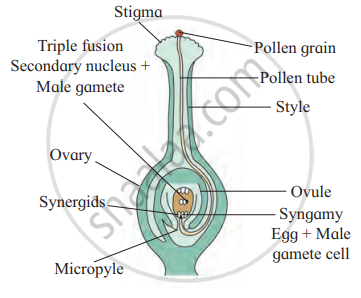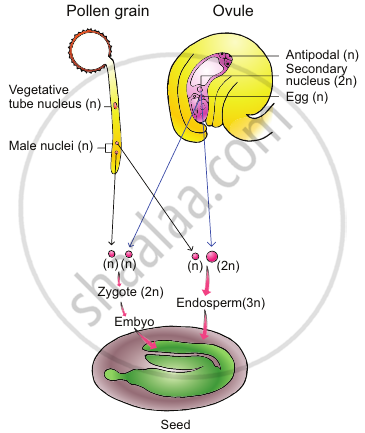Topics
Plant Life
The Leaf
- Root
- Types of Root
- Shoot System
- Stem
- The Structure of a Plant
- Types of Leaf
- Autotrophic Plants
- Insectivorous Plants
- Significance of Photosynthesis
- Transpiration
- Significance of Transpiration
- Modifications of Leaf
- Vegetative Reproduction
- Flower
The Flower
- Flower
- Structure of a Bisexual Flower
- Types of Flower
- Sexual Reproduction in Flowering Plants
- Pollination
- Self Pollination (Autogamy)
- Cross Pollination
- Agents of Pollination
- Fertilization Process
- Fruit
- The Seed
- Classification and Structure of Seeds
- Structure of a Dicotyledonous Seed
- Structure of Monocotyledonous Seed
- Formation of Seed and Fruit
- Germination in Some Common Seeds
The Cell
- Cell: Structural and Functional Unit of Life
- The Invention of the Microscope and the Discovery of Cell
- Organisms Show Variety in Cell Number, Shape and Size
- Cell Theory
- Plant Cell and Animal Cell
- Structure of the Cell
- Plasma Membrane
- Semi-permeable Membrane (Cell Membrane)
- Cell Wall - “Supporter and Protector”
- Cytoplasm - “Area of Movement”
- Nucleus - “Brain” of the Cell
- Plastids
- Non-living Substances Or Cell Inclusion
- Cell Division: an Essential Life Process
- Protoplasm
Human Body
Digestive System
- Food and Its Types
- Nutrients and Nutrition
- Component of Food
- Human Digestive System
- The Mouth and Buccal Cavity
- The Teeth and Its Structure
- Tongue
- The Salivary Glands
- The Food Pipe/Oesophagus
- The Stomach
- The Small Intestine
- Liver
- Pancreas
- Absorption of Food
- The Large Intestine
- Assimilation of Food
- The Aching Tooth
- Oral Health
Respiratory System
Circulatory System
- Blood Circulatory System in Human
- Blood
- Composition of Blood: Plasma (The Liquid Portion of Blood)
- Composition of Blood: Red Blood Cells (Erythrocytes)
- Composition of Blood: White Blood Cells (Leukocytes)
- Composition of Blood: Blood Platelets (Thrombocytes)
- Functions of Blood
- Human Heart
- Blood Vessels
- Circulation of Blood in the Heart (Functioning of Heart)
- Types of Closed Circulation
- Heart Beat - Heart Sounds "LUBB" and "DUP"
- Blood Pressure (B.P.)
- Blood Transfusion and Blood Groups (ABO and Rh system)
- Keeping the Heart Healthy
Health and Hygiene
Habitat and Adaptation
- Habitat
- Adaptations and Its Types
- Adaptations of Plants
- Adaptation in Aquatic Plants (Hydrophytes)
- Adaptation in Desert Plants (Xerophytes)
- Adaptation in plants of snowy regions
- Adaptations in Seeds for Transport Through Air
- Adaptation in Animals
- Adaptation in Aquatic Animals
- Adaptation in Desert Animals
- Adaptation in Mountain Animal
- Adaptation in Aerial Animals
- Double Fertilization
- Significance of Double Fertilization
- Syngamy and Triple Fusion
Notes
Double fertilization:
- Angiosperms are the most varied category of terrestrial plants, and they produce flowers. Flowers are the reproductive organs of angiosperms, containing separate male and female reproductive organs. Each contains gametes: sperm and egg cells, respectively.
- S.G. Nawaschin and L.Guignard in 1898 and 1899, observed in Lilium and Fritillaria that both the male gametes released from a male gametophyte are involved in the fertilization. They fertilize two different components of the embryo sac.
- The fusion of one male gamete with an egg and that of another male gamete with two polar nuclei (secondary nucleus). Since both the male gametes are involved in fertilization, the phenomenon is called double fertilization.
- Pollination allows pollen grains to reach the stigma via style. Both sperm cells enter the ovule-synergid cell. This leads to fertilization.
- In angiosperms, fertilization produces two structures: zygote and endosperm, hence the name "double fertilization."
- Double fertilization is a complex process in which one of two sperm cells fuses with the egg cell and the other fuses with two polar nuclei, resulting in a diploid (2n) zygote and a triploid (3n) primary endosperm nucleus (PEN).
- The endosperm is referred to as triple fusion since it is made up of three haploid nuclei that fuse together. The main endosperm nucleus develops into the primary endosperm cell (PEC) and then into the endosperm.

Double fertilization
Significance of Double Fertilization:
- Unique to Angiosperms: It ensures that the parent plant invests in a seed with a food store only if the egg is fertilized.
- Diploid Zygote Formation: The diploid zygote develops into an embryo, which eventually becomes a new plant. The triploid PEN develops into nutritive endosperm tissue.
- Restoration of Diploid Condition: Syngamy restores the diploid condition by the fusion of a haploid male gamete with a haploid female gamete.
- Prevention of Polyembryony: It helps avoid polyembryony.
It consists of two processes:
- Syngamy: One of the male gametes fuses with the egg nucleus (syngamy) to form Zygote which develops to form an embryo.
- Triple fusion: The second gamete migrates to the central cell where it fuses with the polar nuclei or their fusion product, the secondary nucleus, and forms the primary endosperm nucleus (PEN). Since this involves the fusion of three nuclei, this phenomenon is called triple fusion. This act results in endosperm formation which forms the nutritive tissue for the embryo.

Fertilization in Angiosperms
If you would like to contribute notes or other learning material, please submit them using the button below.
Video Tutorials
Shaalaa.com | Double Fertilization in Angiosperms
to track your progress
